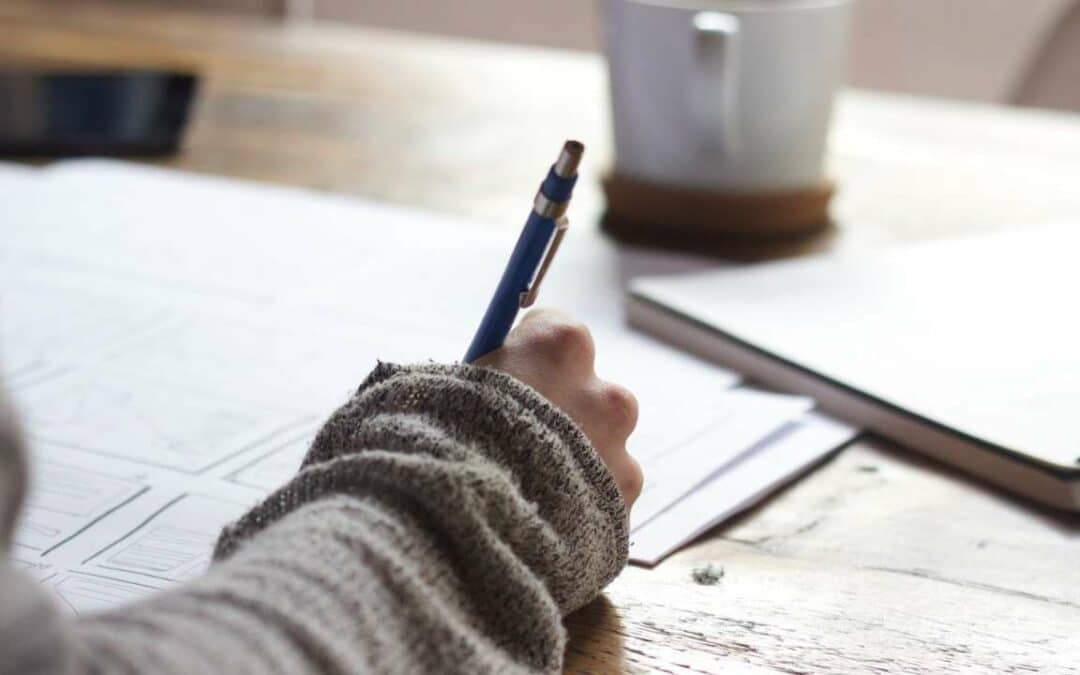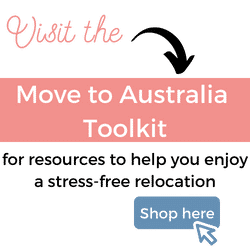Planning your move to Australia? You’ll find all of the services you need in the Move to Australia Directory!
One of the most challenging parts of moving to Australia is waiting for visa grant confirmation to come through.
From the moment that you decide to make the move to Australia to actually being granted permission to move, it can feel like such a long time! Waiting for a visa for Australia can feel like time has slowed down because you’re trapped in a sort of limbo state. You don’t want to put down more roots where you are as you’re planning on leaving, and you can’t yet go about getting settled in your new home as you haven’t got permission to move yet.
It’s like you’re trapped in a time bubble where everyone around you is living their normal lives but your life is on hold until you get the news about your visa and can move forward again.
We were really lucky that our visa wait time (from the moment we decided to make the move through to getting our visa granted) was only nine months from start to finish (it still felt like an eternity though!). I even know people who were able to get their visa grant in a matter of weeks! Visa wait time are changeable depending on what is going on (hello 2020 craziness!), what occupations are needed and how efficient the visa process systems are running at the time, so it’s best not to compare your visa wait time with someone else’s as things change all the time plus your situation will be different to someone else’s.
Whether you’ve just made the decision to migrate to Australia, you’re just submitting your visa application, or you’re anywhere in between on your migration journey, there are still some practical things you can do with your time while you’re in this phase of waiting.
Don’t let visa wait times get you down!
This post about waiting for visa grants contains affiliate links. See the full disclaimer in the footer.
What to do when waiting for visa approval
If you’re wondering what practical things you can focus on while waiting for your Australia visa to come through, you’ll be pleased to know there are some productive tasks you can get stuck into to occupy your mind and keep you from constantly hitting refresh in your emails waiting for that visa grant (or that IELTS result, or that invitation to apply depending on which stage you are at!).
You don’t need to let visa wait times hold you back. Use this time to get stuff done instead so that when you receive your Australia ‘visa granted’ email you’re all set and ready to go!
Waiting for visa? Here are 15 things you can do while you wait for your visa!
Plan your to do list while waiting for visa
There is a lot to do when you move to Australia. Having a master to-do list is really helpful so you know what you need to do before and during your move, and after you arrive. Create a list so you can tick things off as you achieve them.
Don’t want to spend hours creating a list? Grab my Ultimate Emigration Checklist here as I’ve laid it all out for you already.
Research where to move
You can use this spare time while waiting for a visa to think about where you might want to live in Australia. Maybe you know which city you’re heading to already (perhaps you’re on a state-sponsored visa, or you have chosen a city based on a previous visit). If that’s the case, research suburbs and parts of the city where you might want to live as different suburbs have a very different vibe and it’s a good idea to move with a rough idea of where you might want to base yourself.
If you haven’t yet narrowed down a city to live in, start considering where in Australia suits the lifestyle you’re looking for. I have a blog post about how to choose where to live here and an online programme to help guide you through the process here.
Network on LinkedIn
If you don’t have a job lined up in Australia (we didn’t when we moved!), use this time waiting for visa to start making connections online. Make sure your LinkedIn profile is up to date and sells your skills and experience as much as possible – think about what you can offer a company and show that with specific examples.
Start spending time networking online, especially on LinkedIn. Follow business pages, comment, like and share. You want businesses to take notice of you and remember you, so be active and try to leave thoughtful comments.
Update your resume
While you’re working on LinkedIn, it’s the perfect opportunity to update your resume/CV. Australian resumes are concise and clearly show your skills and experience.
Include a .com email address (rather than an email like .co.uk that implies you’re in another country as this can put employers off). You want employers to feel like you’re an easy candidate to consider (not one that is going to come with lots of red tape).
You can find lots of smart resume templates online for free or buy them cheaply on Etsy.
Plan your relocation budget and review your expenses to see if you can save anywhere
Looking at how much moving to Australia is going to cost can be daunting but it is really important you have a budget for your move and that you review it regularly. How much are you allocating for every expense during your move? Keep an eye on all of the costs as you go.
Review your current outgoings now and consider if you can cut anything from your spending that could save you some money to put towards your moving and relocation budget. It all adds up and will help with your resettlement costs.
Start decluttering
It’s never too early to begin decluttering (providing you don’t regain the clutter again before you move!)
Use my four-month decluttering plan to go through your home slowly getting rid of things as you go. If you can do this slowly over time, it feels a lot less stressful than trying to declutter an entire home in eight weeks!
Upskill – take a course, read a book, learn something new
Now is the perfect time to focus on developing your skills – constantly learning helps you compete with the evolving job market. Maybe you could do a short course to learn a new software package or a new skill specific to your occupation. If a course isn’t for you at the moment, reading self-development books improves your mindset and this can help get your head in the right space for the relocation.
Your outside world is a direct reflection of your inner world, so keep feeding your mind with positive, inspiring content.
Research how to get your skills recognised in Australia
The main visa applicant in your family will be getting their skills assessed for their Australia visa (the visa wait times for skills assessments can be painfully slow too!) but when you land in Australia, you may have different hoops to jump through to be able to actually work in Australia. (It’s so frustrating that the skills assessment you do for the visa doesn’t translate to confirming your skills for actual jobs in Australia – they’re two very different things).
Some occupations need a whole new assessment of your skills and experience, others need you to undertake additional training courses, or you may need to apply to a particular body in order to be granted permission to work. Now is the perfect time to do your research. Is there anything you can do before you move to start the ball rolling so when you land you can quickly start working?
Don’t assume that just because you’ve received a positive skills assessment as part of the visa process that you can walk straight into a job in Australia with those skills as there may be more that you need to do.
Plan how you’re going to celebrate the milestones so you have something to look forward to
Celebrating every phase as you move to Australia helps you stay connected to your goal and your ‘why‘ and it helps you appreciate how far you’ve come.
Think about what you will do to celebrate every stage and which milestones are the most important. We celebrated receiving a positive skills assessment, passing the IELTS test with enough points, receiving our invitation to apply, receiving our visa grant, getting our house renovations finished and putting it on the market, selling our home, landing in Australia, getting a job, finding a rental home, the kids starting their new school, buying our first home…the milestones go on and on and I loved celebrating each and every one of them!
We usually celebrate with a bottle of bubbles and our favourite takeaway, or a trip to the beach – nothing too flashy – but it’s more about the act of stopping to reflect on our achievements and it really keeps us motivated (this is a tradition we’ve carried forward and we still do it today whenever we achieve big things!).
Think about the services you’re going to need and start shortlisting them
Choosing which professional services you’re going to need to help you move to Australia can be challenging as often you don’t know anyone else who has made the move who can recommend services to you and it is scary looking at Google and trying to pick from the sea of options.
The services you might need include: migration agents to help with your visa, pet shippers to move your favourite furry friends, one-way insurance to protect you as you relocate and get settled, currency transfer companies to safely and quickly move your money to Australia, a bank account in Australia so you can hit the ground running when you land, shipping agents to move your belongings to Australia, places to hire a car and more.
Moving to Australia isn’t something you can do entirely alone – you need reliable services to help you get there (even if you plan on doing as much as possible on your own).
Begin by writing a list of the services you know you’re going to need and then ask around in Facebook groups for recommendations (always bearing in mind that sometimes people affiliated with these companies can respond pretending to be happy customers – I wish this didn’t happen but I regularly block people in my FB group for doing this). You can also check out the recommendations that I’ve linked above who are my website partners. Check sites like Trust Pilot, Google Reviews and Facebook Reviews.
You will never be able to find a service that offers a 100% perfect service, but you want to find a company that offers amazing customer service so if problems do arise, they are able to quickly fix them.
Start collecting little things for your move
There are lots of bits and bobs you can start collecting now that will be useful for your move. Air tags for your luggage (I’m a convert after seeing a friend’s luggage go missing in transit from the UK to Australia and watching her track it’s return thanks to these beauties!), new lightweight suitcases, swim wear (so you can head to the beach before visiting the shops!), back up drives for your data and photos, padlocks for your cases, packing cubes for your suitcases…
Yes, you can buy lots of things when you land in Australia so you don’t need to go too crazy, but there are things that you’ll find handy for the flight and for the first few days so you don’t have to rush straight out to the shops. If you shop for these bits over a few months, it also don’t feel too difficult on the wallet either.
Shop for travel essentials on Amazon
Research potential arrival accommodation online
Start looking on sites like Booking.com and Air BnB to see what accommodation options are available. This gives you an idea of how much you’re going to need to budget for your arrival. Looking at prices will also get you thinking about areas in your chosen city. I have a post about choosing your arrival accommodation here.
Start following exchange rates so you know when it’s a good time to move your money over
You want to get the most from your money. Start looking at exchange rates with your chosen companies to see how the rates change. You can also set alerts with some companies (such as OFX) so that when the rate hits a certain point, you are alerted. You might not be ready to move your money just yet, but that doesn’t mean you aren’t watching the trends so you know a good rate when you see it.
Begin looking at house prices while waiting for your visa so you can follow the market
I used to love looking on realestate.com.au and domain.com.au and dreaming of the day we’d finally move.
Spend time each week looking at homes to rent and buy now and getting an idea of the prices so that you know what you’re looking at when you move over. Knowing what prices to expect will help you with your budget planning and also salary negotiations when you arrive in Australia.
Start looking at job ads while waiting for visa
Even though you aren’t yet ready to apply for jobs, it doesn’t mean you can look at them. Indeed.com.au, Seek.com.au and LinkedIn job are all great places to search. See which companies are advertising in your field. Begin looking at the language in the job ads (can you reflect any of this back in your resume?).
Make notes on a spreadsheets of companies that sound interesting – you can send out emails on spec to them when you’re getting ready to make the move. See what sorts of roles are available, and if there are any salary ranges listed. Now is the perfect time to spend doing job research.
Waiting for visa: This is part of your journey!
It’s so easy to get frustrated about this period of time waiting for a visa – it can feel like you’re being held back from living your life. Instead, try to think of this phase as being an important part of the adventure you’re on. You aren’t in limbo – you’re exactly where you’re supposed to be. This phase is just a stepping stone to where you are heading. It’s not wasted time – it can be time you use to your advantage so you can spring into action when the waiting for visa period is over.
Waiting for visa: Be inspired and productive as you wait!
Don’t let visa wait times make you feel like your life is on hold. Waiting for visa grant is sooo frustrating but there are so many productive and useful things you can do while waiting for a visa to Australia. So stop Googling: ‘visa waiting times Australia’ and ‘waiting times for immigration visa’ on repeat and instead turn your attention to the things YOU can control! Amazingly, there is so much that you can do to move your dream of moving to Australia forward.
The question is, which one of these 15 things to do while waiting for your Australia visa will you do first?

















